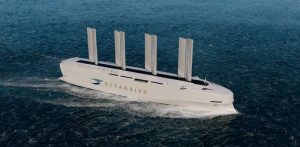
Sailing cargo ships are making a genuine comeback.
Japanese bulk carrier MOL is operating a wind-assisted ship. American food giant Cargill is working with Olympic sailor Ben Ainslie to deploy WindWings on its routes. Swedish shipping company Wallenius is aiming for Oceanbird to cut emissions by up to 90%. The French start-up Zephyr & Borée has built the Canopée, which will transport parts of European Space Agency’s Ariane 6 rocket this year.
I researched the decarbonization of the shipping industry. While doing fieldwork aboard the Avontuur, a wind-propelled cargo ship, I even got stuck at sea for five months—because of the pandemic, not because the winds failed.
Sailing towards zero emissions
Like every other sector, the shipping industry needs to decarbonize in line with the Paris Agreement, but its emissions continue to grow. In 2018 the International Maritime Organization (IMO) set a first-ever target of halving shipping emissions between 2008 and 2050.
It was an important, but inadequate, first step. Climate Action Tracker calculates that halving emissions is not nearly enough to keep global warming below 1.5℃.
And yet the scientific consensus is that 1.5℃ is the real upper limit we can risk. Beyond that, dangerous tipping points could spell even more frequent disasters.
Luckily, the IMO will revise its strategy this July. I and many others expect far more ambition—because zero shipping emissions by 2050 is a necessity to keep the 1.5℃ limit credible. That gives us less than three decades to clean up an industry whose ships have an average life of 25 years. The 2050 timeline conceals that our carbon budget will likely run out far more quickly—requiring urgent action for all sectors, including shipping.
